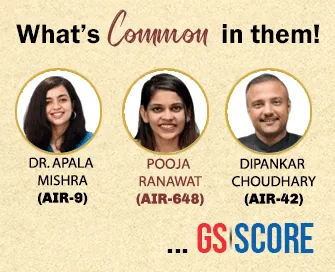

28th June 2025 (11 Topics)
Mains Issues
Context
Eurasia is in turmoil. Three major conflicts- Russia-Ukraine, Israel’s Gaza operations and the Israel-Iran-US conflict are reshaping the geopolitics of the region. Wars don’t just cause physical destruction; they profoundly impact international relations. Given the present situation, it is time for India to reconfigure its global engagements, going beyond old-world romanticism and Cold War calculations.
India’s Geostrategic Challenges:
- Rise of China and BRI: The Belt and Road Initiative has become a cornerstone of its global strategy, fostering economic connectivity and influence across Asia, Africa, and Europe.
- Energy Security: Conflicts in Ukraine, Gaza, and Iran-Israel tensions also create challenges for India’s energy security.
- The IMEC Initiative:
- Launched in 2023 during the G20 summit in New Delhi, the India-Middle East-Europe Economic Corridor (IMEC) aims to connect South Asia, the GCC, and Europe through a network of sea and land routes.
- However, IMEC faces significant challenges:
- Geopolitical Instability in Eurasia: Particularly in the Middle East, threatens the viability of IMEC’s land routes through countries like Jordan and Israel.
- Flawed Positioning: IMEC is often pitted against China’s BRI, conflating geo-economic goals with geopolitical rivalry. This framing ignores the reality that many IMEC partner countries, including GCC nations and EU states, are deeply integrated into the BRI.
Addressing IMEC’s Structural Challenges:
- Include countries like Jordan and Egypt in the corridor.
- Investing in rail and port infrastructure to handle the massive cargo volumes currently managed by the Suez Canal.
- Reframe IMEC as a complementary economic initiative rather than a rival to the BRI, fostering cooperation with BRI-partner countries.
Adopting a multidirectional approach:
- Moving beyond old-world romanticism: India’s foreign policy has often been shaped by historical narratives, such as the romanticised view of ancient trade routes with Europe through Gulf ports. While India historically exported spices and textiles in exchange for gold, modern realities differ.
- Strengthening ties with the middle east: India’s enhanced engagement with Saudi Arabia and the UAE has been a diplomatic success. These relationships should be deepened to ensure IMEC’s stability and to counterbalance China’s influence in the region.
- Reinvigorating ASEAN engagement: India must prioritise its Act East Policy by boosting trade and investment with ASEAN countries, leveraging the comprehensive strategic partnership established in 2022.
- Engaging Eastern and Central Europe: Beyond Western Europe, India should explore opportunities in Eastern and Central European markets, which are less saturated by Chinese influence.
- Reassessing relations with Russia: With Russia’s growing alignment with China, India must carefully calibrate its strategic partnership with Moscow to safeguard its interests in Central Asia and beyond.
PYQQ. “The long-sustained image of India as a leader of the oppressed and marginalised Nations has disappeared on account of its new found role in the emerging global order”. Elaborate. (2019) |


Mains Issues
Context
A new Lancet Commission report has projected that by 2030, half of the two billion adolescents worldwide will live in multi-burden countries grappling with an excess burden of disease. By 2030, 42 million years of healthy life will be lost to mental disorders or suicide, and 464 million adolescents will be obese or overweight.
Key challenges for India:
- Triple burden of disease: In India, the double burden of malnutrition, i.e. undernutrition and overnutrition, is stark. Data indicates that 52% of girls and 20.8% of boys aged 10-24 are anaemic, far exceeding the target of less than 10%. Additionally, the disability-adjusted life years (DALYs) attributed to communicable, maternal, and nutritional conditions are higher among both girls and boys.
- Mental health crisis: Mental health disorders are a growing concern, exacerbated by excessive and problematic use of technology and digital devices. The interrelated crises of climate change, biodiversity loss, and pollution further impact mental health, adding layers of stress and uncertainty.
- Climate change and conflict: Adolescents will be the first to face the lifelong impacts of climate change, with half of the world’s two billion adolescents projected to live in multi-burden countries by 2030. In India, environmental degradation, coupled with rising conflict and migration, will further limit the opportunities for young people.
- Socioeconomic and gender disparities: Economic and political instability, coupled with gender-specific challenges, hinder equitable access to health services. Nutritional deficiencies, particularly among girls, and limited access to age- and gender-sensitive programs exacerbate disparities.
Significance:
- Demographic Dividend: With adolescents forming a significant portion of India’s population, their health and well-being are critical to harnessing the demographic dividend.
- The ‘Economic Case for Investment in the Well-being of Adolescents in India’ report (2024) estimates that increased investment in adolescent health could boost India’s GDP by 10.1% annually.
- National Adolescent Health Strategy: The handbook operates across six major thematic areas: sexual and reproductive health, mental health, injuries and violence (including gender-based violence), nutrition, substance misuse, and non-communicable diseases.
- Sustainability and resilience: Adolescents are at the forefront of the green economy and climate resilience. Their involvement in policy-making and program design is crucial for sustainable development.
Way Forward:
- Policy Interventions for nutrition and obesity: India needs to implement policies such as taxing sugar-sweetened beverages, improving access to healthy food, and promoting physical activity through access to green spaces.
- Mental Health and resilience building: Investing in operational research to develop evidence-based mental health care models is critical.
- Climate resilience and youth engagement: Adolescents must be included in climate policy discussions to ensure their voices shape the green economy.
- Infrastructure and Safety: India’s efforts in Gurugram, Haryana, demonstrate how road safety measures can reduce adolescent mortality from traffic injuries. Scaling such initiatives nationwide, including safer crosswalks and speed reduction measures, can enhance adolescent safety.
- Multisectoral collaboration: The complexity of adolescent health demands multisectoral responses. Collaborative efforts between the government, private sector, and civil society can drive innovation and resource allocation.


Prelims Articles
Context
According to a new study by scientists from the Wildlife Institute of India (WII) dhole, or Asiatic wild dog (Cuon alpinus), believed to have been locally exterminated, has made a confirmed return to Assam’s Kaziranga-Karbi Anglong Landscape (KKAL).
More about news:
- The finding is significant as it highlights the ecological value of the corridor in supporting threatened species.
- Dholes are social animals known to form packs of up to 30 individuals.
- However, depending on prey availability, they may also hunt alone or in pairs.
- The Dhole was photo-captured on six occasions in the Amguri corridor.
- The current distribution of the dhole is restricted to:
- Parts of Central and Eastern Asia, including India, Nepal, Bhutan, Bangladesh, China, Myanmar, Indonesia, Thailand, and Malaysia.
- The last confirmed sighting of dholes in northeast India was reported from Nagaland in 2011.
- The last confirmed sighting of dholes in northeast India was reported from Nagaland in 2011.
- The study focused on four key animal corridors which lie within the Indo-Burma Biodiversity hotspot. These corridors include:
- Panbari,
- Haldhibari,
- Kanchanjuri,
- Amguri
- India is experiencing a decline in wildlife species due to:
- Habitat loss
- Deforestation
- Climate change


Prelims Articles
Context
India rejected the supplemental award by the Court of Arbitration on Kishenganga and Ratle hydroelectric projects, saying that it “never recognised” the Court of Arbitration, which is a “serious breach” of the Indus Waters Treaty, which has been put “at abeyance” after the April 22 terror attack in Pahalgam.
Recent Dispute: Kishenganga and Ratle Hydropower Projects
- These Projects are located in Jammu and Kashmir, on tributaries of the Jhelum and Chenab rivers (Western rivers).
- Pakistan raised objections to the design and technical aspects of these projects, alleging violations of the Indus Water treaty provisions.
- Pakistan approached the World Bank to establish a Court of Arbitration to resolve these technical disputes.
- India’s position:
- India’s stance regarding this Court of Arbitration was that it was a “unilateral action” by Pakistan to approach the World Bank.
- India has never recognised the legitimacy of the Court of Arbitration, calling it an “illegal” body.
- The MEA reminded that after the Pahalgam terror attack, India has exercised “its rights as a sovereign nation under international law” and placed the Indus Waters Treaty in abeyance.
Indus Waters Treaty (IWT):
|


Prelims Articles
Context
The two northeastern States, Assam and Mizoram, have toughened their stand on identification documents to curb unauthorised cross-border movements of Bangladesh and Myanmar nationals.
Assam’s Aadhaar Policy:
- The Assam government to issue Aadhaar cards to adult citizens only through District Commissioners (DCs).
- Aimed at making it difficult for illegal Bangladeshi immigrants to obtain Aadhaar, facilitating their detection and deportation.
- Assam has achieved 100% Aadhaar coverage, prompting stricter measures for new applications.
- Additional Measures: Since April 2025, individuals not applying for inclusion in the National Register of Citizens (NRC) are barred from obtaining Aadhaar.
Mizoram’s Policy on Myanmar Refugees:
- The Mizoram Government plans to retain the identity cards of Myanmar nationals to regulate movement across the border.
- Implementation:
- Identity cards to be collected from Myanmar nationals during their stay in Mizoram.
- Strict action, including seizure of IDs, against those misusing refugee status.
- Biometric data collection of Myanmar nationals entering Mizoram initiated to enhance monitoring.


Prelims Articles
Context
According to the ‘Statistical Report on Value of Output from Agriculture and Allied Sectors (2011-12 to 2023-24)’ released by Ministry of Statistics and Programme Implementation the Gross Value Added (GVA) of agriculture and allied sectors at current prices registered a growth of about 225%, increasing from ?1,502 thousand crore in 2011-12 to ?4,878 thousand crore in 2023-24.
- Crop Sector Contribution:
- Crop sector remains the largest contributor to Gross Value Output (GVO) at constant prices with a share of 54.1% in 2023-24 (?1,595 thousand crore).
- Cereals, fruits, and vegetables together account for 52.5% of crop GVO in 2023-24.
- Paddy and wheat dominate cereals, contributing ~85% of cereal GVO (at constant prices) in 2023-24.
- Key states (Uttar Pradesh, Madhya Pradesh, Punjab, Telangana, Haryana) contribute 53% of cereal GVO in 2023-24.
- Uttar Pradesh leads in cereal GVO, though its share declined from 18.6% (2011-12) to 17.2% (2023-24).
- Fruits and Vegetables:
- Among the fruits, the constant prices GVO of Banana (? 47 thousand crore) has surpassed that of Mango (? 46.1 thousand crore).
- Among the vegetables, potato remained the top-most contributor in GVO.
- Condiments and spices:
- Share of Madhya Pradesh (19.2%) in GVO of condiments & spices in 2023-24 made a dramatic leap, becoming the top contributor in this group, while Karnataka and Gujarat followed with 16.6% and 15.5%.
- The contribution of the ‘Fishing and aquaculture’ sub-sector to agricultural GVA rose from 4.2% in 2011-12 to 7.0% in 2023-24


Prelims Articles
Context
Two GLP-1 (Glucagon-like peptide) drugs, Novo Nordisk’s semaglutide and Eli Lilly’s tirzepatide, are now available in the Indian market.
More about the news:
- These drugs are extremely effective for weight loss, helping people lose 15% to 20% of their body weight, equivalent to what they would otherwise lose with bariatric surgeries.
- They have also been found to be effective or are being studied for a host of other conditions, including cardiovascular diseases, kidney disease, non-alcoholic fatty liver disease, and obstructive sleep apnoea.
- It has also been reported that people on these drugs end up making significant dietary changes, consuming smaller, healthier meals.
Understanding GLP-1 drugs:
- Both semaglutide and tirzepatide belong to a new class of medicines called GLP-1 (glucagon-like peptide-1) receptor agonists. They are prescribed for the management of type 2 diabetes and obesity.
- These drugs mimic certain naturally-occurring gut hormones called incretins (GLP-1 is one such incretin) produced in the small intestine, and are hence also known as incretin mimicker.
- How do these miracle drugs work?
- Improving the secretion of insulin that allows more of the glucose in the bloodstream to enter cells, where it can be used for energy.
- Inhibiting the secretion of the hormone glucagon that stimulates the liver to release stored glucose into the bloodstream.
- Slowing down the emptying of the stomach so that the glucose levels in the bloodstream don’t spike.
- Reducing appetite by signalling to the brain that one is satiated.


Prelims Articles
Context
In a letter sent to all state governments, the environment ministry said the objective of 'Model Rules for Felling of Trees in Agricultural Lands' is to enhance the ease of doing business in agroforestry and incentivise farmers to integrate trees into their farming systems.
Key Features of Model Rules:
- Governing Body: State Level Committee (SLC) under the Wood-Based Industries (Establishment and Regulation) Guidelines, 2016.
- Includes officials from the revenue and agriculture departments.
- Advises state governments on promoting agroforestry and simplifying rules for felling and transit of trees, especially commercially valuable species.
- Empanel agencies for verification of applications and timber transit.
- Registration and Application Process:
- Platform: National Timber Management System (NTMS) portal.
- Land Registration: Applicants must register plantation land with details of ownership and location.
- Provide plantation details: Number of saplings by species, planting date (month and year), and average seedling height.
- Regular updates are required as per SLC guidelines.
- For lands with more than 10 trees, the applicant must apply online through the NTMS. For application for felling of up to 10 trees, applicants need to upload trees' photos to the NTMS.
- Divisional forest officers will monitor how verifying agencies are functioning.
- They will submit a report every quarter to the SLC on the performance of these agencies.
Significance of agroforestry:
- The government has been promoting agroforestry to double farmers’ income.
- Enhance tree cover outside forests
- Mitigate climate change
- Reduce timber imports and ensure sustainable land use.


Editorials
Context
The Supreme Court of India decided to refix the methodology and the criteria for designating lawyers as senior lawyers. In Jitender @ Kalla vs State (Govt.) of NCT Of Delhi (2025), the Court revisited the earlier judgments in the Indira Jaising vs Supreme Court of India cases of 2017 and 2023. It directed the High Courts in the country to frame rules in the light of the instant judgment.
Inequality in the Legal Profession:
- Unequal treatment among equals: The systemic inequality within India's legal profession stems from Section 16 of the Advocates Act, 1961, which divides advocates into senior advocates and advocates based on criteria such as ability, standing, or special knowledge. This classification institutionalises unequal treatment among equals.
- Lessons from the U.S. Experience: A 2014 Reuters report, The Echo Chamber, highlights the emergence of an elite cadre of lawyers in the U.S. who disproportionately influence Supreme Court appeals. Between 2004 and 2012, less than 1% of lawyers handled 43% of appeals, with 51 out of 66 being highly influential corporate firm representatives.
- Judicial Endorsements and Missed Opportunities: The judgments in Indira Jaising and Jitender fail to address the issue of growing inequality in the legal profession and endorse Section 16 of the Advocates Act.
Constitutional Questions Surrounding Designation of Senior Advocate:
- Subjectivity in Designation Criteria: The 2025 Jitender @ Kalla vs State (Govt.) judgment criticised the point-based assessment for senior advocate designation as "highly subjective,". However, the Court permitted the application system to continue, saying that the application for designation could be treated as a consent for designation, as required by the Statute.
- Constitutional Validity of Classification: The 2017 Indira Jaising case upheld the classification of advocates into senior and non-senior, arguing that the prescribed parameters by the Supreme Court validate it. However, the contention that this distinction lacks a rational nexus with advancing the legal system remains unresolved.
- Need for Re-examination by a Larger Bench: Despite acknowledging flaws in the 2017 norms, the Court did not revisit the core issue of whether the classification itself is inherently discriminatory. Referring the matter to a larger Bench could have clarified if the provisions violate constitutional principles of equality and fairness.
Towards a fairer judicial system:
- Historical Legacy and Ideals: The Indian legal profession has a symbiotic relationship with the country’s freedom struggle. The national movement, which was led predominantly by lawyers, presented a legal fraternity that was deeply societal and sacrificial. This historical trajectory, rooted in equality, should guide the profession.
- Judicial Oversight and Legal Plutocracy: In cases like Jaising, the judiciary’s reliance on foreign practices (e.g., Nigeria, Australia, Singapore and Ireland) ignored India’s constitutional context. Jurist F.S. Nariman criticized this as a “caste system” within the profession, driven by ‘homo social morphing,’ where judges favour similar profiles, sidelining women and marginalized groups.
- Systemic Disparities and lack of judicial diversity: The dominance of “star lawyers” has marginalised thousands of deserving advocates, fostering intellectual apartheid. This lack of judicial diversity restricts representation and makes litigation a privilege of the rich. The judiciary must address these disparities to ensure an inclusive and representative legal system.
Practice question:
Q. Critically analyse the Supreme Court’s approach in the Jitender @ Kalla vs State (2025) and Indira Jaising cases towards addressing systemic inequality in the designation of senior advocates.


Editorials
Context
India has been ranked among the top 100 countries in the Sustainable Development Report for the first time since this data began to be published by the Sustainable Development Solutions Network (SDSN) in 2016.
Economic and Social Development
- Poverty Reduction (SDG 1): India has made significant strides in poverty reduction, improving its SDSN ranking from 110th in 2016 to 99th in 2023 among 167 nations. Proxy data indicate a substantial decline in poverty, nearly halving from 22% in 2012 (NSSO data) to 12% in 2023 (World Bank estimates).
- Zero Hunger (SDG 2): Despite progress in poverty alleviation, achieving zero hunger remains a challenge. The National Family Health Survey (NFHS-5, 2019-21) reports stunting at 35.5%, a marginal improvement from 38.4% (NFHS-4, 2015-16), and wasting reduced from 21.0% to 19.3%. It also reveals the wide disparity between income groups and rural and urban areas in access to a nutritious diet.
- Rising Obesity Concerns: Obesity in the working age population (15-49 years) has almost doubled between 2006 and 2021, and is concentrated in wealthier urban areas. This trend highlights the dual burden of malnutrition, where undernutrition coexists with overnutrition, necessitating targeted public health interventions.
Infrastructure and Technological Advancements
- Electricity Access (SDG 7): India has achieved near-universal household electrification over the past two decades, a significant milestone under SDG 7. However, the quality of power and duration vary vastly based on regions and urban/rural fault lines.
- Renewable Energy Growth: India ranks as the fourth-largest deployer of renewable energy, primarily solar and wind, reflecting its commitment to sustainable energy.
- Digital and Financial Inclusion (SDG 9): Infrastructure development under SDG 9 has been bolstered by rapid mobile penetration and financial inclusion through UPI-linked digital payment systems. However, the COVID-19 pandemic exposed significant gaps in rural internet connectivity.
Governance and Institutional Challenges
- Governance and Rule of Law (SDG 16): India’s performance in governance and the rule of law (SDG 16) has been a weak link throughout the Modi years. Persistent challenges in ensuring transparent and accountable governance structures limit progress in sustainable development.
- Press Freedom: It is a critical component of SDG 16, and remains under strain. Declining indicators in this area highlight the need for reforms to protect media independence and foster an environment conducive to open discourse.
- Institutional Independence: The lack of strong and independent institutions further hampers India’s progress under SDG 16. Strengthening institutional frameworks is essential to sustain and accelerate advancements in other SDGs, ensuring long-term developmental stability.
Practice question:
Q. India has made notable progress in poverty reduction and infrastructure development under the Sustainable Development Goals (SDGs), yet challenges persist in achieving zero hunger and ensuring equitable access to quality services. Critically Analyse.


Editorials
Context
Last week, China, Pakistan and Bangladesh held their first trilateral meeting in Kunming, China. The discussions focused on furthering cooperation and the possibilities of deeper engagement. This meeting closely follows another trilateral meeting between China, Pakistan, and Afghanistan, held in May, to extend the China-Pakistan Economic Corridor.
The China-Pakistan Nexus: A Strategic Alliance Against India
- Origins of the Alliance: The 1962 India-China war catalysed an enduring strategic partnership between China and Pakistan, aimed at countering India’s regional influence. Post-war, China identified Pakistan as a key ally to engage India with immediate security threats, thereby limiting New Delhi’s ability to challenge Beijing’s interests, security, and global status.
- Economic and Military Dependence: Pakistan’s reliance on China has deepened over the decades, with significant economic and military support shaping its strategic posture. By the end of 2024, Pakistan’s debt to China exceeded $29 billion, primarily for infrastructure and investments. It is estimated that over 80% of Pakistan’s arms imports are from China.
- Diplomatic Shielding: China has consistently protected Pakistan on international platforms, notably shielding Pakistan-backed terrorists at the United Nations Security Council. This camaraderie was largely visible during India’s Operation Sindoor in May 2025, following the Pakistan-sponsored Pahalgam terror attack.
Resurfacing Strategic Manoeuvres: The Trilateral Threat
- Historical Precedents: The concept of leveraging regional countries against India is not new. In 1965, Pakistan explored using East Pakistan, China, and Nepal to threaten India’s strategic Siliguri Corridor. This idea of using South Asian countries seems to have resurfaced as both China and Pakistan face a confident India.
- India’s Assertive Response: India’s decisive responses to Pakistan-sponsored terror attacks in Uri (2016), Pulwama (2019), and Pahalgam (2025) have signalled a shift from tolerance of Pakistan’s nuclear blackmail. Measures like suspending the Indus Waters Treaty, halting trade, restricting port access, and targeting military installations have weakened Pakistan’s military confidence.
- Regional Realignments: India’s pragmatic engagement and domestic politics of the region have slowed down China’s momentum in South Asia. In the Maldives, President Muizzu’s initial anti-India stance has shifted toward reliance on New Delhi for economic stability. Nepal’s Belt and Road Initiative (BRI) projects with China face funding disputes, while Sri Lanka’s President Dissanayake has prioritised ties with India.
China’s Regional Ambitions and India’s Countermeasures:
- China’s Trilateral Strategy: China’s push for trilaterals with Afghanistan and Bangladesh reflects its anxieties over India’s growing influence. Post-2021 and 2024 regime changes, both Afghanistan and Bangladesh have tilted toward Pakistan and China, raising concerns about new terror and security challenges.
- Balancing Regional Dynamics: South Asian nations face the challenge of balancing relations with India and China, as Beijing leverages Pakistan to complicate regional dynamics.
- India’s Strategic Imperatives: The developments in the region demonstrate, once again, that China, and not Pakistan, is India’s biggest challenge. On its part, Delhi will have to continue to express redlines and convey the point that any misadventures by its neighbours could have severe economic, military, and political costs.
Practice Question:
Q. Discuss the strategic implications of China’s trilateral engagements with Pakistan, Afghanistan, and Bangladesh in countering India’s influence in South Asia. What measures can India adopt to mitigate the emerging security and diplomatic challenges?



